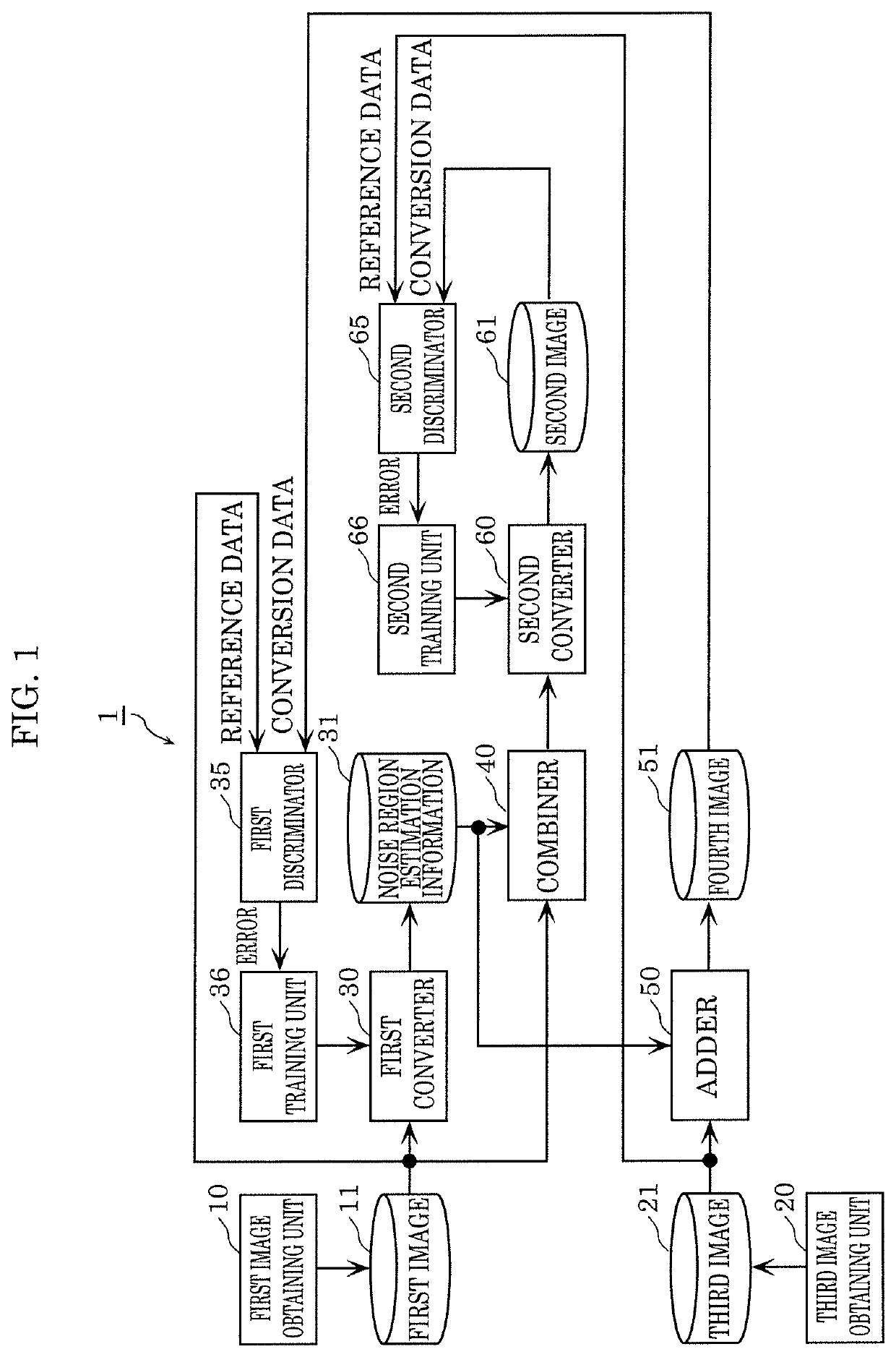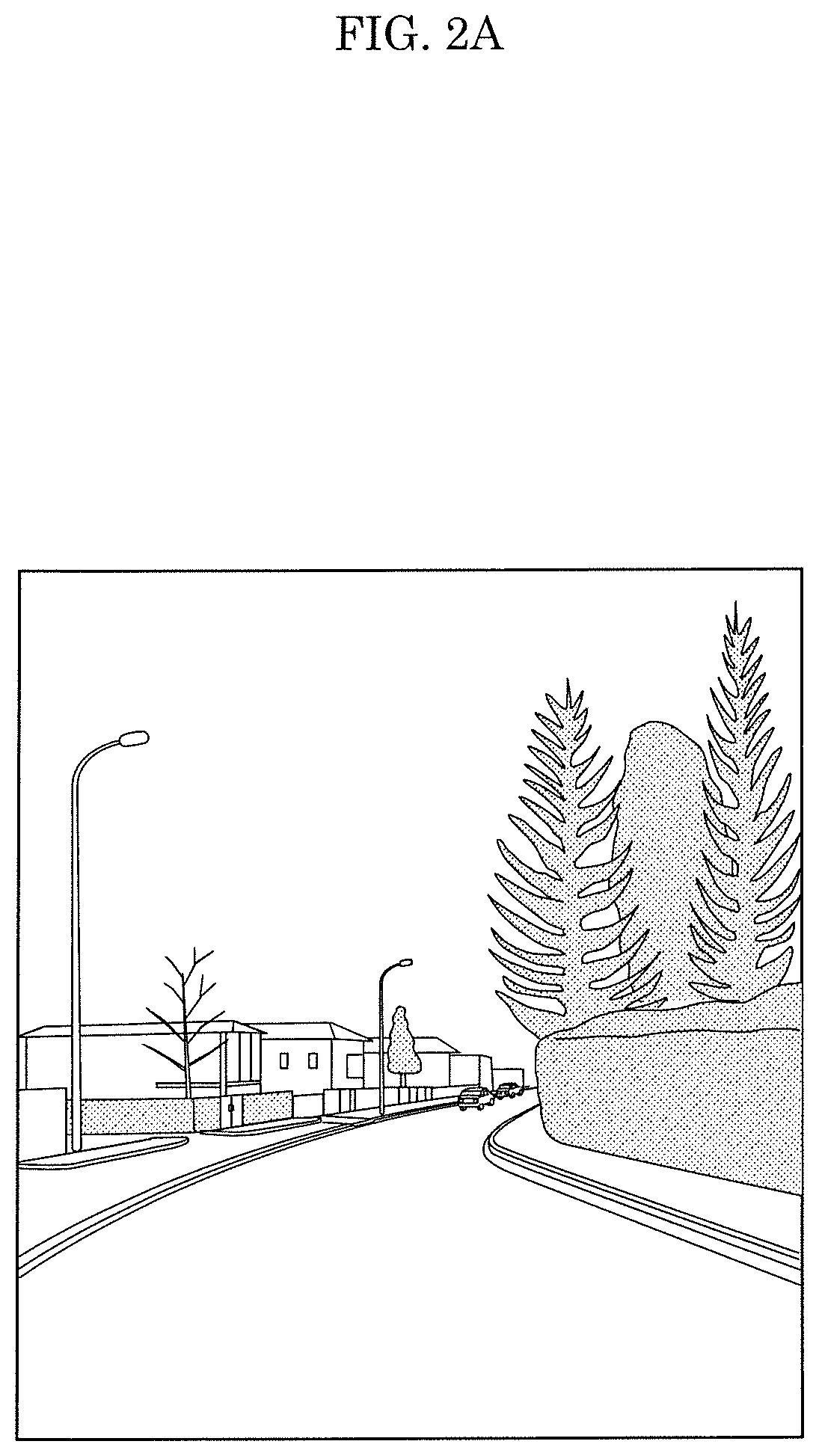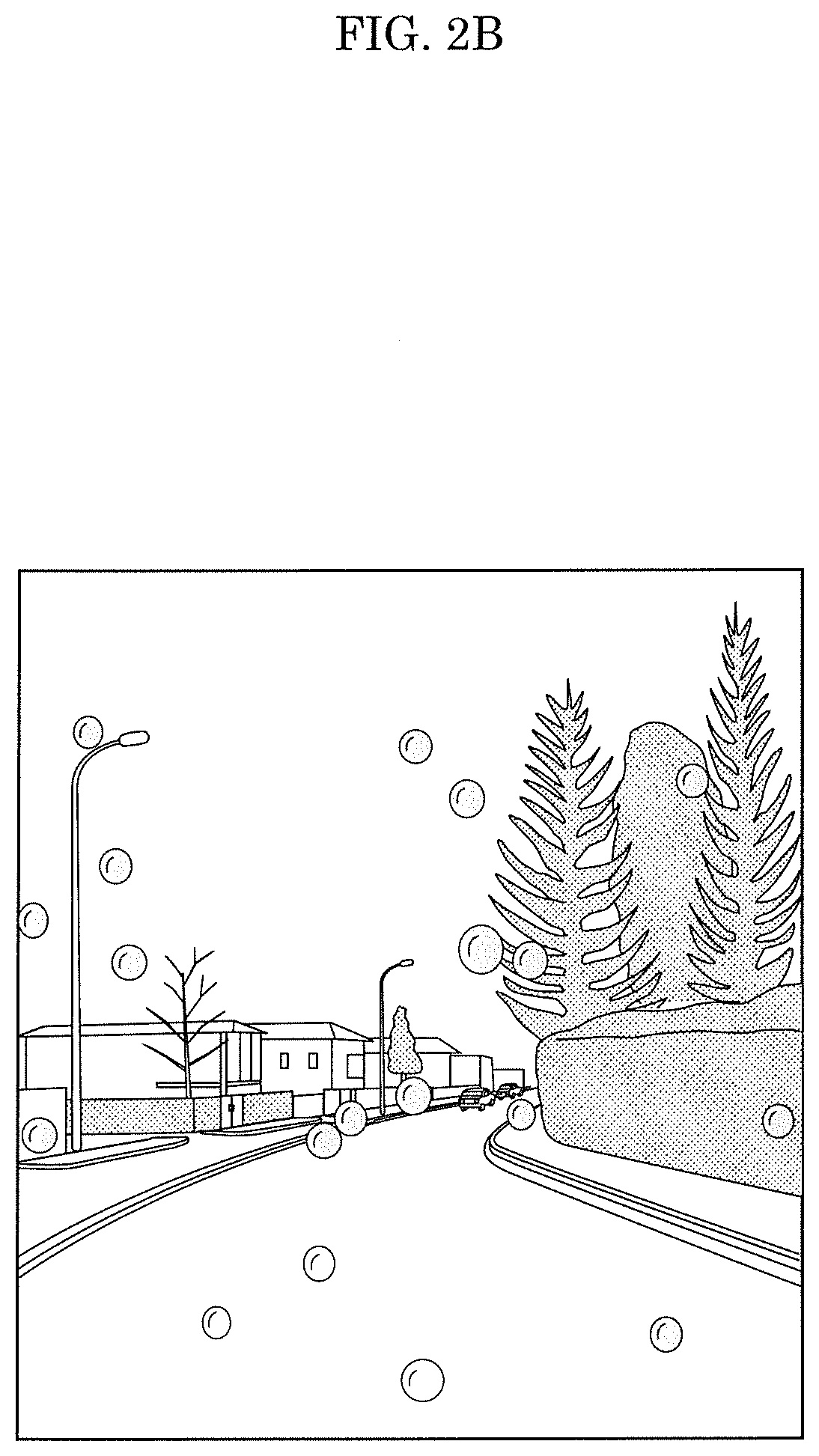Information processing method, information processing device, and recording medium
- Summary
- Abstract
- Description
- Claims
- Application Information
AI Technical Summary
Benefits of technology
Problems solved by technology
Method used
Image
Examples
embodiment 1
[0046][1-1. First Training Device]
[0047]Hereinafter, a first training device according to Embodiment 1 will be described. The first training device includes a first converter (a first generator or a first denoiser) and a second converter (a second generator or a second denoiser) made of machine learning models. The first training device trains the first converter so as to estimate one or more noise regions in a first image including one or more noise regions. The first training device trains the second converter so as to output a second image. The second image is an image obtained by performing noise region removal processing on the first image by weighting the noise regions estimated by the first converter.
[0048][1-1-1. Configuration of First Training Device]
[0049]FIG. 1 is a block diagram illustrating a configuration of first training device 1 according to Embodiment 1.
[0050]As illustrated in FIG. 1, first training device 1 includes: first image obtaining unit 10, first image stor...
embodiment 2
[0105][2-1. Second Training Device]
[0106]Hereinafter, a second training device according to Embodiment 2 which is configured by modifying part of the structural components of first training device 1 according to Embodiment 1 will be described. The second training device includes a first converter (a first generator or a first denoiser) and a second converter (a second generator or a second denoiser) which are made of machine learning models, in a similar manner to first training device 1. The second training device trains the first converter so as to estimate one or more noise regions in a first image including one or more noise regions, and trains the second converter so as to output a second image. The second image is an image obtained by performing noise region removal processing on the first image by weighting the noise regions estimated by the first converter.
[0107][2-1-1. Configuration of Second Training Device]
[0108]FIG. 6 is a block diagram illustrating a configuration of se...
embodiment 3
[0171][3-1. Third Training Device]
[0172]Hereinafter, a third training device according to Embodiment 3 which is configured by modifying part of the structural components of second training device 1A according to Embodiment 2 will be described. The third training device includes a first converter (a first generator or a first denoiser) made of a machine learning model, and trains the first converter so as to output a second image. The second image is an image obtained by performing noise region removal processing on the first image including one or more noise regions.
[0173][3-1-1. Configuration of Third Training Device]
[0174]FIG. 11 is a block diagram illustrating a configuration of third training device 1B according to Embodiment 3. In the description below, the structural components of third training device 1B which are the same as the structural components of second training device 1A and first training device 1 according to Embodiment 1 have been assigned with the same reference ...
PUM
 Login to View More
Login to View More Abstract
Description
Claims
Application Information
 Login to View More
Login to View More - R&D
- Intellectual Property
- Life Sciences
- Materials
- Tech Scout
- Unparalleled Data Quality
- Higher Quality Content
- 60% Fewer Hallucinations
Browse by: Latest US Patents, China's latest patents, Technical Efficacy Thesaurus, Application Domain, Technology Topic, Popular Technical Reports.
© 2025 PatSnap. All rights reserved.Legal|Privacy policy|Modern Slavery Act Transparency Statement|Sitemap|About US| Contact US: help@patsnap.com



